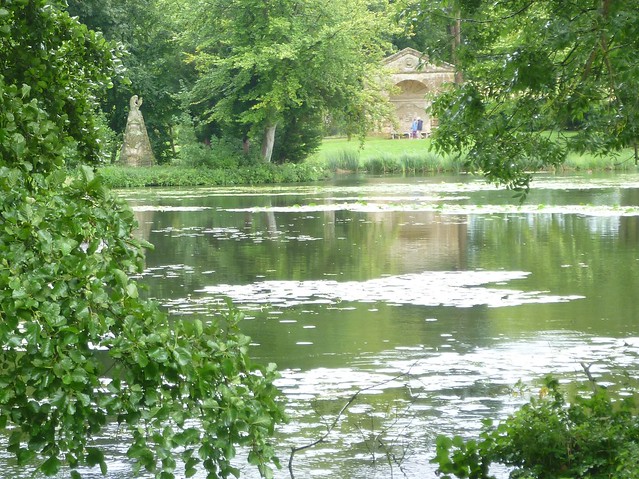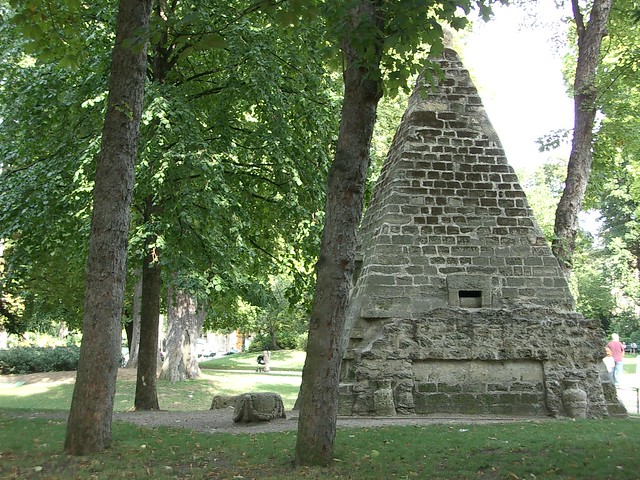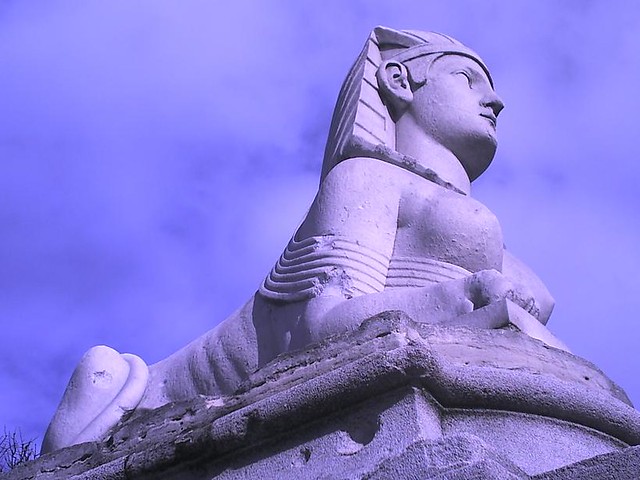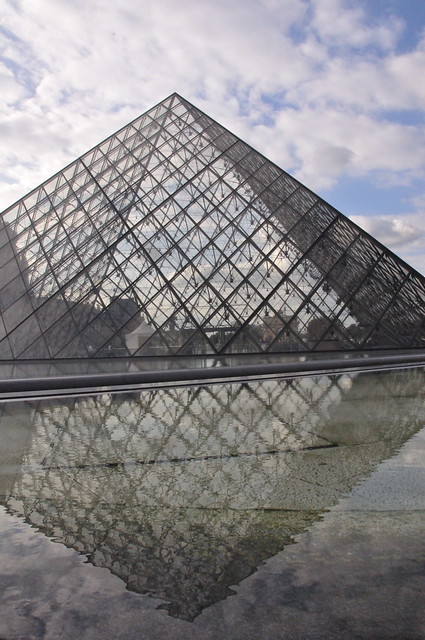A Mysterious Little “English Garden” in Paris Posted by Hichem on Jan 1, 2013 in Vocabulary
Although the Parc Monceau is wide open to the general public, it is certainly the “weirdest” park in Paris, and that is on more than a single level!
Curiously enough, next to it stands a small edifice where it is said that a fifth-generation park watchmen closely monitor its nine gated entries.
What is so special about this park that it prompts such a longstanding high-level of vigilance, unlike other prominent gardens scattered throughout Paris?
The answer can probably be identified based on the backdrop story of the park, facetiously nicknamed “the Folly of the Duke of Chartres“, in reference to the famous (or make that “infamous”, actually) Phillippe d’Orléans, Duke of Chartres and then Duke of Orleans.
Remember this Duke?
The state of New Orleans in the United States was named after his own papi (grandpa), no less.
But that is not his only claim to fame.
We actually mentioned him extensively in “Basta with Bastille Day.”
The Duke d’Orleans was le cousin of the King Louis XVI, who was famously beheaded during the French Revolution along with his wife Marie-Antoinette (and no, the poor lady never said “Let them eat cake.” The Parisian people started to starve because the wretched Duke d’Orelans was discreetly stashing the country’s wheat and barley in the Isle of Man on the English Channel. The reason? To engineer wide social unrest throughout the French capital, before openly claiming the French throne for himself.)
To keep a long story short, the French King lost his head thanks to the machinations of none other than his own cousin, the Duke, who was acting on direct orders from the city of London, as it turned out.

Monet's "Parc Monceau", 1878
Already at the age of 22, encouraged by some highly established mandarins of the British East India Company to whom he ended up owing tremendous amounts of money (Monsieur le Duc was indeed a compulsive gambler, a notorious habitué of the London casinos, a real-life “Duke of Hazard“), he purchased the land that hosts the park today.
A park which he fittingly and rather unimaginatively called “English Garden.”
Highly impressed by the English gardens that were famous for their “irregular” and “asymmetric” shapes (the exact meaning of the word “Baroque“), the Duke wanted his parc Monceau to mirror the gardens of the Stowe House in England, which belonged to a relative and close ally of his political master William Pitt the Younger.

Comparable places to the Stowe House, called “follies” (think of the French word “folie“, meaning “madness“) had already existed in France: the Folie Saint James and the Desert de Retz in Chambroucy, to name only these two (both of them are located on the extension of the so-called “Axe historique“, which appears to be pointing towards the UK.)

The "Axe historique": A compass needle pointing towards the city of London? (Picture from Wikipedia)
But that clearly didn’t seem to be enough for the Duke, who insisted on establishing his own “folly” upon Parisian land.

One object that stands out prominently in the whole park, and which may actually offer a hint as to why the garden is deemed o’ so “special”, is a mini Egyptian-style pyramid!
Indeed, the excessive infatuation with Egyptian mythology running deep among some French circles is nothing new.


Think of the Obelisk of Louxor in la Place de la Concorde, installed by non other than the son of the Duke d’Orleans who eventually became French King Louis-Philippe (the obelisk was set exactly where the guillotine was previously installed during the French Revolution), and the sphinx statues in Châtelet and the jardin des Tuileries.
More recently, former President François Mitterrand erected two giant glass pyramids within the Louvre—allegedly to celebrate the bicentennial of the French Revolution, which, as we saw in an earlier post, took a turn for the worse -bloody guillotine campaigns and all- under the aegis of the Duke d’Orleans and his British masterminds.

Another interesting yet usually unknown detail: Mitterrand’s controversial grande pyramide in the Louvre is perfectly aligned with the nearby Palais Royal, namely the Duke’s main residence, and the headquarters of his jacobins hords, whom he unleashed upon the streets of Paris exactly on July 14th, 1789, in order to subvert the French Revolution which initially began as a perfectly peaceful process.
Other “extravagant” features to be found in the Monceau Garden are a Roman colonnade and a bridge modeled after the Rialto bridge in Venice.
Later, the park was adorned with statues of the likes of Gounod, Chopin, Maupassant, and Alfred de Musset…
But you can bet your French fries that these relics are not what the nearby watchmen worry the most about!
Today, the site is an active free Wi-Fi area, to satisfy all the computer addicts who can’t live too long without Internet access.
http://www.youtube.com/watch?v=grNDFxkeFaI
French singer Yves Duteil sings about le parc Monceau, where he often went as a kid to do his “école buissonnière” (“playing hooky”, meaning to skip school…)
___________________________________________________________
- Picture shared by patricenaej, Guillaume Cattiaux, dinosaursarenotdead, jeremy saker, via Flickr
- Check out our new beginner French class for Transparent Connect! The class timeslot is Wednesdays from 5 – 6 PM EST. Use coupon code cnxt75 at checkout to save $75! Une chance à ne pas rater! (A chance not to miss!)

Build vocabulary, practice pronunciation, and more with Transparent Language Online. Available anytime, anywhere, on any device.





